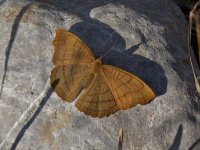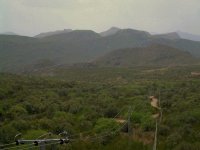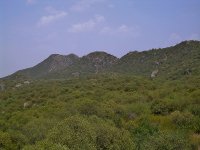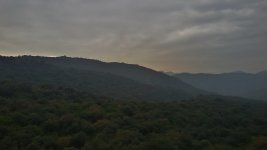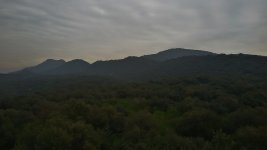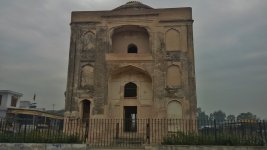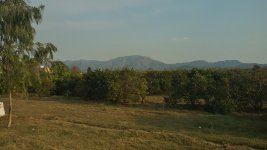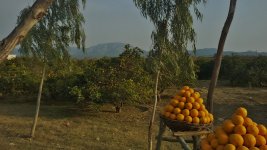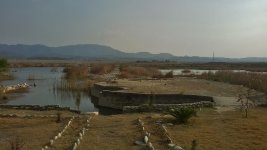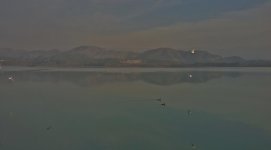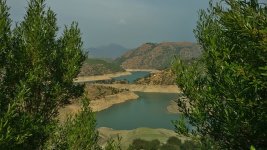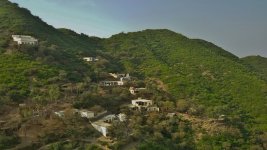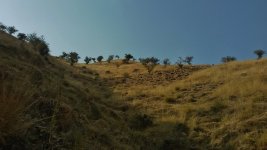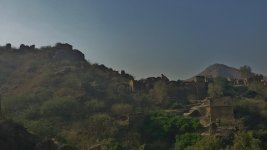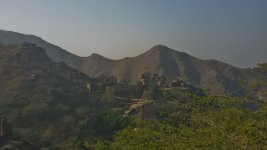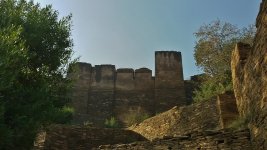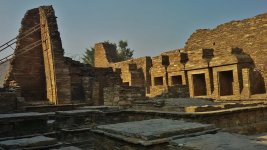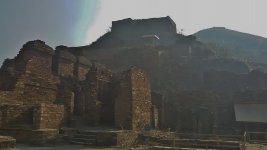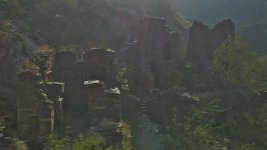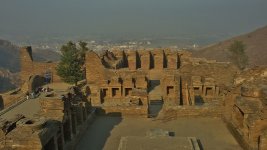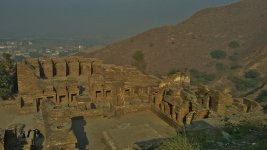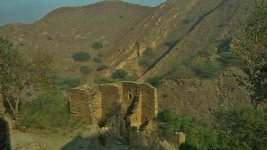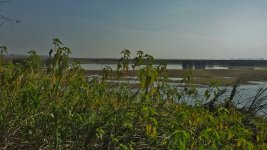Another family wedding and another visit to Pakistan. My ancestral is in the North West, a few miles East of the Indus and just south of the Himalayan foothills. It is one of the most agriculturally fertile areas in that region and the land was once marsh. It does not take me long to get out of my parents ancestral village to the surrounding farmland. Most of the land is owned by the local villagers who own small plots in general. House Sparrows, House Crows, Common Myna, Collared Dove are regular birds within then residential areas. Brown Rock Chats have colonised over the last 10 years. In the farmland Indian Roller, White Throated Kingfisher, Common Babbler, Long Tailed Shrike, White Wagtail, Water Pipit, Eurasian Skylark, Oriental Skylark, Plain Prinia, Siberian Chiffchaff, Red Wattled Lapwing, House Swift, Laughing Dove, Cinerous Tit, Plain Martins, Barn Swallows, Red Vented Bulbuls, Bank Myna, a sole Jungle Myna and White Breasted Waterhens! A Drongo species flying in the distance was a rare winter record and most likely a Black Drongo.
One thing that has always reminded me of winter in Pakistan was the gentler caw of the Rook which had a misty feel about it as they flew over the village from field to field.
A trip to Taxila which lay 30-40km to the south-east to see Ackram Awan who had immense knowledge of birds and butterflies was always a must. I had known him for 5 years and a keen birder. However, in September 2013 he noticed the diversity of butterflies within his hometown and that no one was really recording them so he decided that he would explore them. I wanted to visit the Buddhist remains at Taxila and a little water body nearby.
The water body we named the Taxila Wetlands were 2 small ponds thickly vegetated on the fringes. We saw White Wagtail, Plain Prinia, Rosy Pipit, Water Pipit, Citrine Wagtail and a female Eurasian Teal in the morning. She was a bit of a surprise on this tiny water body but flew off. I looked at the spot and thought it held potential!
We went to the Buddhist archaeological sites next which were declared a UNESCO World Heritage Site in 1980 as some ruins dated back to 1000BCE. i will talk about them more in my next trip report as I lost my photos. We saw Common Kestrel, Brown Rock Chat, a female Black Redstart and then some Eurasian Crag Martins over the ruins. The latter were unusual in winter.
A few km to the North East of Taxila lay Khanpur Dam. Barn Swallows, White Wagtails, Great Cormorants were most commonly seen birds. Mallards were the only duck species seen and 3 Great Crested Grebes were a lifer for Ackram! We toured the lake in boat which was probably not the safest and given a life jacket which would probably drown us! There was an island in the middle which we explored. We came across a butterfly. First Ackram ignored it but then he realised it was always worth a look. On closer inspection he realised it was a Pseudergolis wedah, the Tabby, is a species of Nymphalid butterfly which had never been recorded in Pakistan before! Two hours before sunset and we decided to try the wetlands again and 2 more surprises - a Water Rail and Painted Snipe. First there 1, then 2, 3, 4 then 5. Within 15 minutes 10 Painted Snipe were feeding and this was a shock to see so many in that small place and made us wonder what else was hiding in there? That ended our day!
One thing that has always reminded me of winter in Pakistan was the gentler caw of the Rook which had a misty feel about it as they flew over the village from field to field.
A trip to Taxila which lay 30-40km to the south-east to see Ackram Awan who had immense knowledge of birds and butterflies was always a must. I had known him for 5 years and a keen birder. However, in September 2013 he noticed the diversity of butterflies within his hometown and that no one was really recording them so he decided that he would explore them. I wanted to visit the Buddhist remains at Taxila and a little water body nearby.
The water body we named the Taxila Wetlands were 2 small ponds thickly vegetated on the fringes. We saw White Wagtail, Plain Prinia, Rosy Pipit, Water Pipit, Citrine Wagtail and a female Eurasian Teal in the morning. She was a bit of a surprise on this tiny water body but flew off. I looked at the spot and thought it held potential!
We went to the Buddhist archaeological sites next which were declared a UNESCO World Heritage Site in 1980 as some ruins dated back to 1000BCE. i will talk about them more in my next trip report as I lost my photos. We saw Common Kestrel, Brown Rock Chat, a female Black Redstart and then some Eurasian Crag Martins over the ruins. The latter were unusual in winter.
A few km to the North East of Taxila lay Khanpur Dam. Barn Swallows, White Wagtails, Great Cormorants were most commonly seen birds. Mallards were the only duck species seen and 3 Great Crested Grebes were a lifer for Ackram! We toured the lake in boat which was probably not the safest and given a life jacket which would probably drown us! There was an island in the middle which we explored. We came across a butterfly. First Ackram ignored it but then he realised it was always worth a look. On closer inspection he realised it was a Pseudergolis wedah, the Tabby, is a species of Nymphalid butterfly which had never been recorded in Pakistan before! Two hours before sunset and we decided to try the wetlands again and 2 more surprises - a Water Rail and Painted Snipe. First there 1, then 2, 3, 4 then 5. Within 15 minutes 10 Painted Snipe were feeding and this was a shock to see so many in that small place and made us wonder what else was hiding in there? That ended our day!
Attachments
Last edited:




